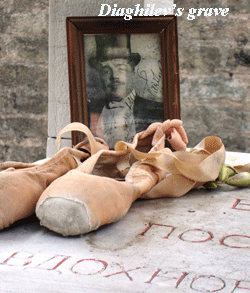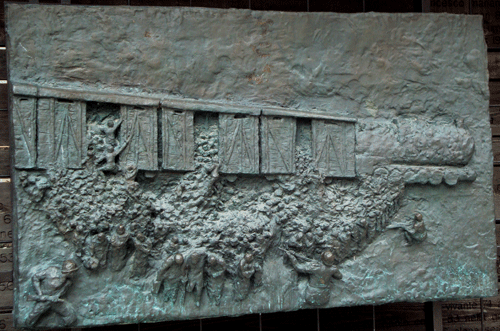 We went to Venice for a city break. I had been there two years ago speaking at a conference. This time I had more free time to explore the city. We went to the Guggenheim Museum of modern art, which contains fairly incomprehensible art from the first half of the Twentieth Century; the Doge’s gothic palace in St Mark’s Square from which Casanova famously escaped in1756 and which he brilliantly describes in his book, ‘The Story of My Life’; Isola di San Michele (the cemetery, which is an island in the lagoon) where Stravinsky, Diaghilev, Ezra Pound, Joseph Brodsky and Baron Corvo [Frederick Rolfe] are buried; the Lido, where Mann’s ‘Death in Venice’ is set; but the most memorable part of our visit was to the Jewish Ghetto (where there is a permanent armed guard) and which we visited twice.
We went to Venice for a city break. I had been there two years ago speaking at a conference. This time I had more free time to explore the city. We went to the Guggenheim Museum of modern art, which contains fairly incomprehensible art from the first half of the Twentieth Century; the Doge’s gothic palace in St Mark’s Square from which Casanova famously escaped in1756 and which he brilliantly describes in his book, ‘The Story of My Life’; Isola di San Michele (the cemetery, which is an island in the lagoon) where Stravinsky, Diaghilev, Ezra Pound, Joseph Brodsky and Baron Corvo [Frederick Rolfe] are buried; the Lido, where Mann’s ‘Death in Venice’ is set; but the most memorable part of our visit was to the Jewish Ghetto (where there is a permanent armed guard) and which we visited twice.
On the walls, in one corner, are astonishing bas-relief memorials to the victims of the holocaust designed by the Lithuanian artist and sculptor, Arbit Blatas, whose parents had been sent to concentration camps, in one of which his mother perished. The most powerful is ‘The Last Train’ which was unveiled in 1993 on the 50th anniversary of the deportation of the Jews from the Venice ghetto.
I never knew until now that the word ‘ghetto’ actually is derived from the Italian and it was in Venice that the world’s first ghetto was instituted from 1516 at Ghetto Nuova, a small, dirty island where an iron foundry had once stood. The word ‘ghetto’ is from the Italian getto meaning ‘casting’ or ‘slag’ or Venetian geto meaning ‘foundry’. The ghetto was totally surrounded by water and its two access points were controlled at night and early morning by heavy gates manned by Christian guards (paid for by the Jews) who imposed a curfew at night.

